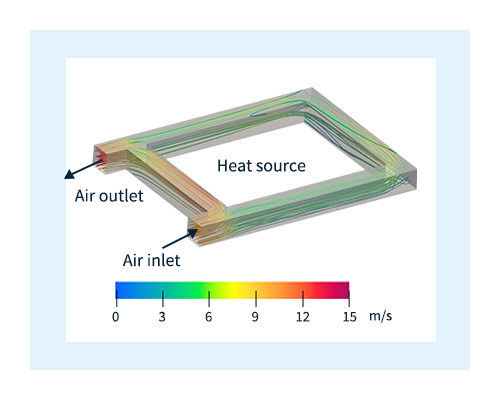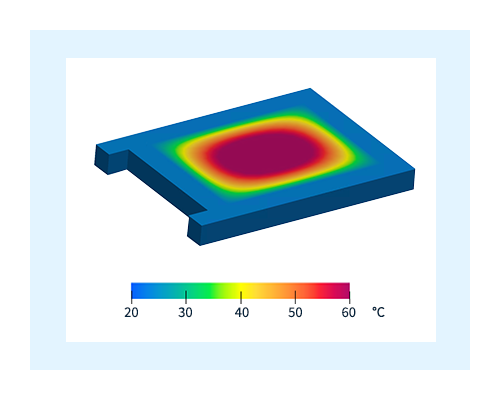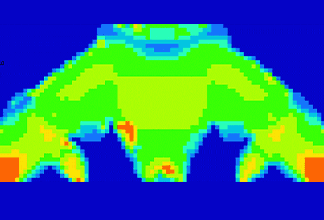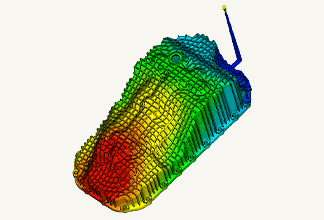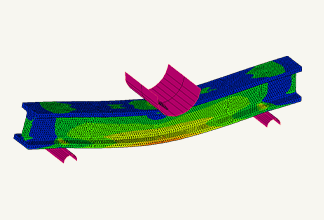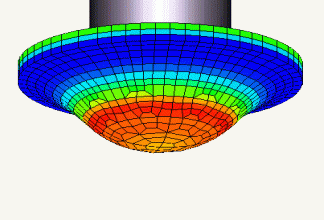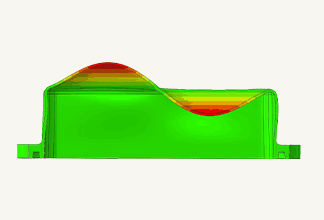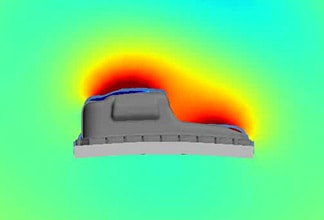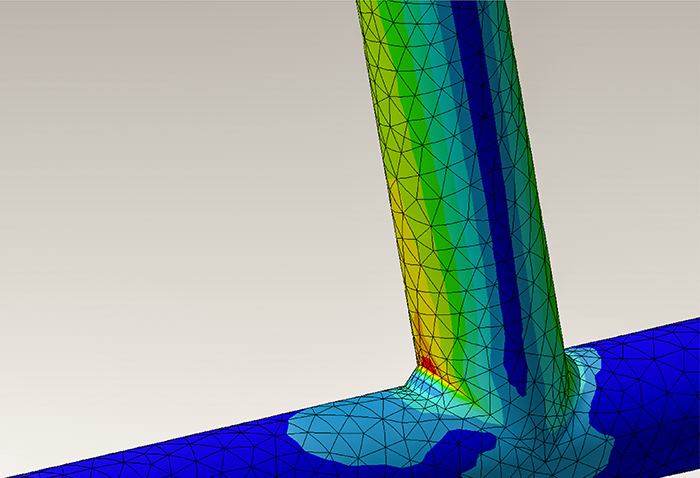Technical Information
Thermo-fluid analysis details
Equations used for thermo-fluid analysis
The easiest way to check the temperature distribution in a solid is to perform a heat conduction analysis on the solid only. The way heat is transferred inside the solid is solved by the heat conduction equation.
In addition, when considering the flow field of a fluid such as air around a solid as a boundary condition, the heat transfer equation is given at the solid wall. When considering radiation from the surface to the outside, the radiation equation is given at the solid surface. In this case, the flow of the fluid is not solved.
On the other hand, if you want to strictly consider the flow field and temperature distribution of the fluid around the solid, perform thermo-fluid analysis of the fluid part. In thermo-fluid analysis, the laws of conservation of mass and conservation of momentum are used to solve the motion of the fluid, and the laws of conservation of energy are used to solve the transfer of heat in the fluid.
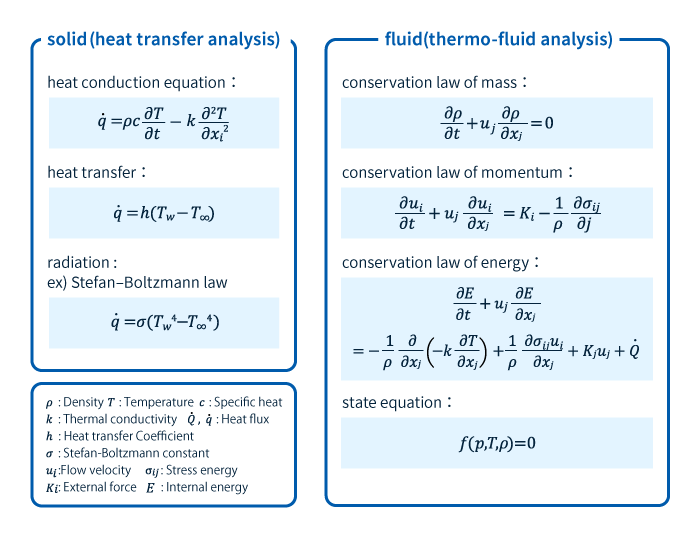




.png)

